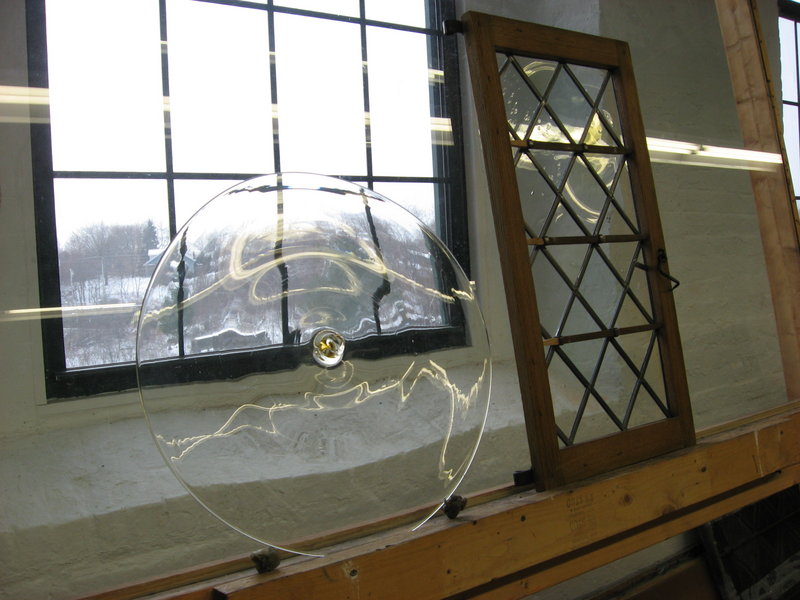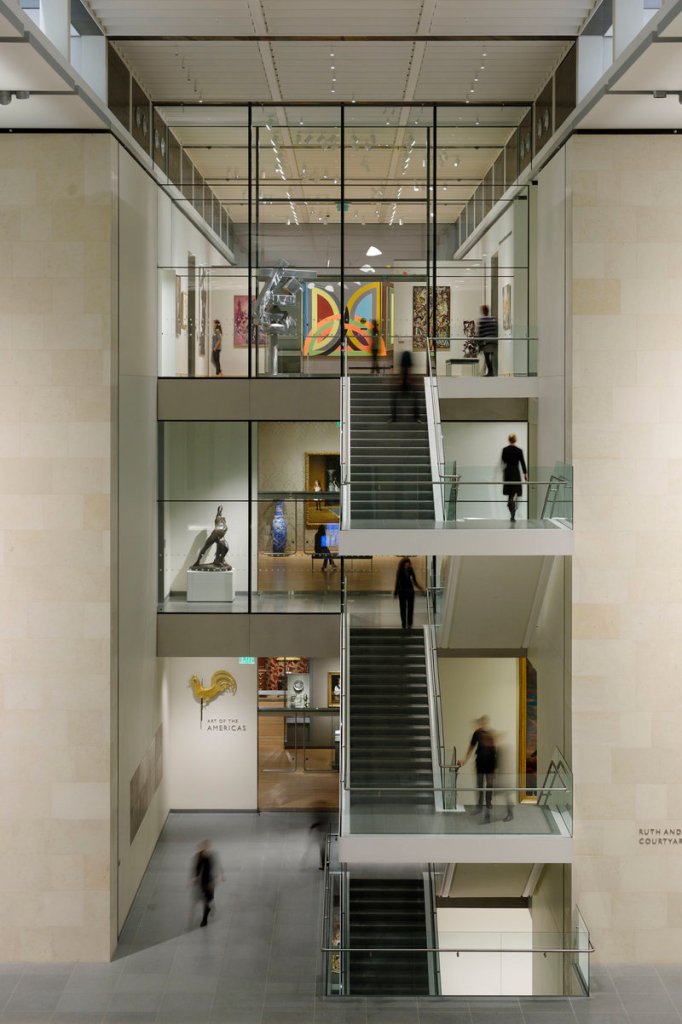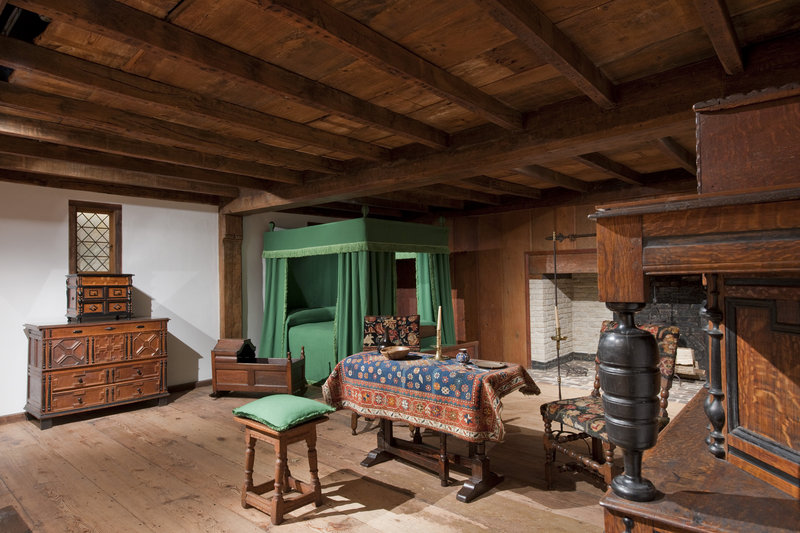BOSTON – When the Museum of Fine Arts needed experts to complete a pair of 1700s period rooms in its new wing, a couple of craftspeople from Maine got the call to do the heavy lifting.
Robin Neely, a glass conservator and consultant from the Deering neighborhood in Portland, made two lead-glass windows for the Brown-Pearl Room, newly installed in the elegant and breathtaking Art of the Americas wing at the Boston museum.
Aaron Sturgis, a timber framer from Berwick, used his expertise to rebuild the 1704 Brown-Pearl Room as well as a dramatic timber frame for the Manning Room from a late 17th-century New England house.
“To be an artisan involved in a museum as well respected as the MFA is — well, it’s astounding,” said Sturgis. “It’s an opportunity that you do not get many times.”
Any kid who grew up in southern New England knows these rooms from grade-school field trips to the MFA. The period rooms, which were conserved from historic New England homes and rebuilt to demonstrate Colonial life, used to be in the basement of the venerable old museum building, down the hall from the Egyptian sarcophagi. An annual visit was standard fare for schoolchildren studying history and social studies.
The rooms were dismantled in preparation for the museum renovation, and then reinstalled in the new wing. They have never looked so good or been as accurately represented as they are now, said Gerry Ward, a curator of American decorative arts and sculpture at the museum.
Both are located in the basement of the four-story Art of the Americas wing, which opened amid much fanfare in November.
“The period rooms are not the most fashionable things, but a lot of people still like them, and they remain a good teaching tool,” Ward said.
The new wing has transformed the entire museum, reordering how visitors experience the MFA. Encased in glass, the Art of the Americas wing is tucked among existing museum buildings between Huntington Avenue and The Fenway in Boston’s Back Bay.
The wing includes 53 galleries over four floors, and its focus is the museum’s long-standing strength: its collection of art and artifacts, primarily paintings, from Colonial New England through the time of Winslow Homer. The new wing goes beyond our America to also include the other Americas to our south, and thus takes on a global perspective and helps create context for the work with which we are most familiar.
Aside from the many paintings throughout the galleries that feature Maine and Maine artists, the work of contemporary Maine craftspeople is focused in the period rooms in the basement.
STARTING FROM SCRATCH
For Neely, the glass project proved challenging because it was outside her specialty of stained glass from the late 19th and early 20th centuries. Leaded glass from the 18th century was not her area of expertise, and she had to start from scratch to create the pair of windows for the Brown-Pearl Room.
The biggest challenge was simply finding examples of early-1700s windows. Pictures didn’t do it. Neely needed to see and handle actual windows, so she arranged a visit to Historic New England, the Massachusetts-based preservation society. It has a warehouse in Haverhill, Mass., that’s full of historic artifacts and architectural elements. She also consulted with Arlene Palmer Schwind, curator at the Victoria Mansion in Portland who’s also a noted glass expert.
Neely photographed windows from that period, paying close attention to the tiniest of details — the striations in the glass, how the lead sits on the wood, the type of nails used to fasten the wood, the irregularity of the design and how the individual pieces of glass were assembled, puzzle-like, within the framework of the lead and wood.
Glass was extremely valuable back then, and large pieces were rare. Most windows were constructed with small pieces fastened together by lead within wood frames.
“I had to make them appropriately rough,” Neely said.
That proved difficult, because commercial glass today looks uniform. Commercially available glass cannot match the appearance of the historic windows, she said.
Neely hired Portland-based glassblower Ben Coombs to blow several rondelles, each about 17 or 18 inches in diameter. They looked like large record albums, with curved striations resulting from the centrifugal force of the spinning. Coombs tinted the glass slightly yellow to match what glass looked like 300 years ago.
Neely, who has a studio in the Dana Warp Mill in Westbrook, then cut the rondelles into smaller diamond shapes and fabricated the windows to reproduce the look of the original antiques. She used custom rosebud nails to complete the project, fabricated by Norm Faucher of North Lebanon. (Faucher also made nails that Stugis used in his timber frame project.)
“Making the windows was actually pretty straightforward,” Neely said. “It was all the research, finding a glassblower and having the nails made for it, that was the challenge. I was pleased that I could involve other artisans from Maine in the project.”
Neely is among the leading glass experts in New England, and was the best and obvious choice for the job, said Ward. “There are not many people who do what she does,” he said. “She came very highly recommended.”
Neely did other work for the museum on the new wing, mostly reviewing the condition of existing stained-glass pieces before their installation in the new galleries, and writing condition reports.
REALLY BIG BEAM
For Sturgis, his work at the MFA began several years ago when the period rooms were dismantled so the building project could commence. He was hired to help remove and later reinstall the timber frames.
One beam from the Manning Room is 49 feet long and weighs 800 pounds. It’s the largest single object in the museum — so large that the new wing was built around it. The beam was put in place before construction was finished, because it was too large to move around once the wing was enclosed. As such, it was the first art object in the new wing.
Sturgis appreciates the attention to detail the museum paid to the Manning Room. In its current state, the timber frame is interpreted as a work of art in itself. The museum has left the timber frame exposed, so people can see how it was made and how it stands together.
The frame is the focus of the attention as opposed to the objects that fill the room, Sturgis said.
“That’s what excited me the most, the fact that Manning was being considered almost its own art piece as a timber frame,” he said. “You have a much clearer and closer look at the artifact. You can actually go up and touch it.
“From a craft perspective, saving an historic structure and illustrating how it was built and repaired it really exciting. It was an amazing experience.”
Staff Writer Bob Keyes can be contacted at 791-6457 or at:
bkeyes@pressherald.com
Follow him on Twitter at:
twitter.com/pphbkeyes
Send questions/comments to the editors.







Success. Please wait for the page to reload. If the page does not reload within 5 seconds, please refresh the page.
Enter your email and password to access comments.
Hi, to comment on stories you must . This profile is in addition to your subscription and website login.
Already have a commenting profile? .
Invalid username/password.
Please check your email to confirm and complete your registration.
Only subscribers are eligible to post comments. Please subscribe or login first for digital access. Here’s why.
Use the form below to reset your password. When you've submitted your account email, we will send an email with a reset code.